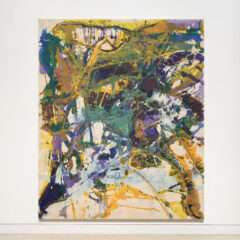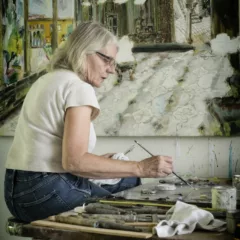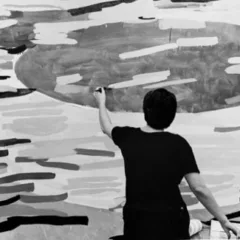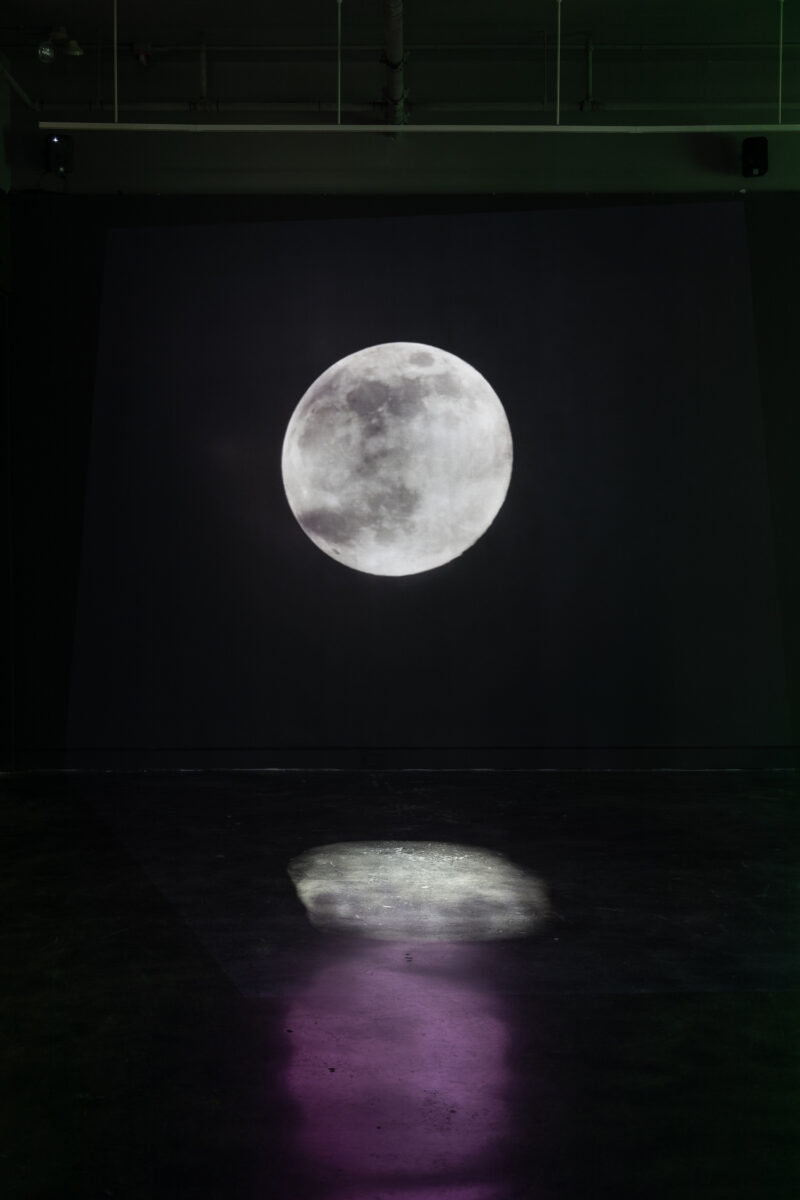
4K video with sound, continuous
loop, edition of 3. Photo courtesy of Locks Gallery
The moon is always full in Understories, an exhibition of multimedia works by Nadia Hironaka and Matthew Suib at the Locks Gallery (February 3 – March 18, 2023). The glowing digital likeness occupies a central spot on the far wall of the darkened room, like a sentinel, but one with a sense of humor: its reflection rippling in a puddle-sized spot on the floor. This sly piece, titled Eternal Return (Nocturne), is a charming bit of trickery hinting at one of the exhibition’s key themes, displacement.
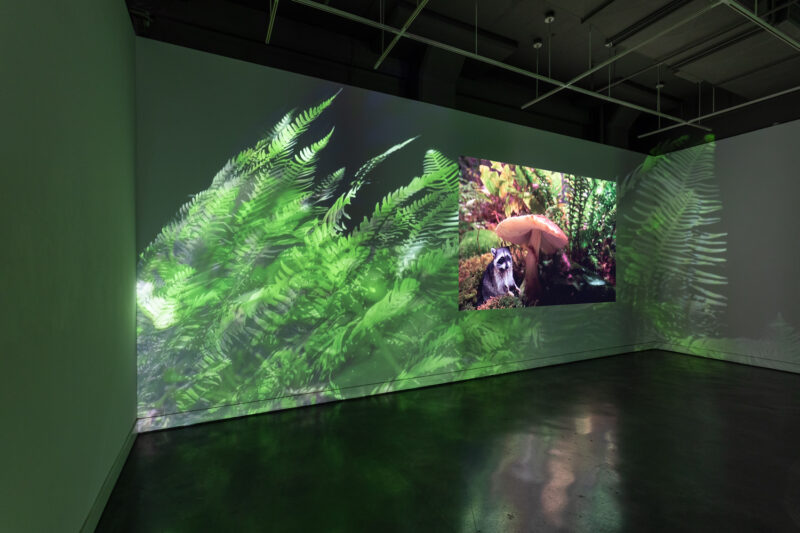
4K video installation with sound,
length 20 minutes and 40 seconds,
edition of 3. Photo courtesy of Locks Gallery
Benches in the center of the gallery are equipped with headphones for a DIY multiplex experience. The left wall is alight with a projection of emerald green ferns, shot from the vantage of a small mammal. The video, Field Companion, made with a macro lens, plays in a rectangular portal within the ferns. In 20 minutes, we are treated to a meandering journey and a fertile imagination, through a lush forest filled with fantastical inhabitants. A philosopher turtle, a cheeky raccoon, a deer-human chimera and others mingle with slugs, frogs, bugs and birds, discussing the interdependence of nature as Venus fly traps and pitcher plants demonstrate their points. As the camera swoops around with birds and insects and pauses on water droplets plinking, you catch glimpses of the filmy boundaries of this world. In reality we are voyeurs in a 12 cubic foot terrarium in the couple’s studio, inspired by New Jersey’s pine barrens. It’s an amazing concentration of flora and fauna, even before any fiddling in post-production improbably places a deer on a mushroom or bestows hands on the raccoon. It’s easy to suspend your disbelief and be carried away by this ramble.
On the opposite wall of the gallery another story is projected. Pink Carnations is under ten minutes in length and covers decades of Hironaka’s family history. Nature appears again, but now as a backdrop and a touchpoint across generations. The film begins with the narrator, voiced by the couple’s young daughter Anja, describing an attempt to create a home garden in a small area. The narration shifts and becomes a chronicle of Hironaka’s Japanese grandfather’s story, starting with his traveling across an ocean in search of adventure and opportunity. He finds these, settles down in California with his family and establishes a successful nursery growing roses.
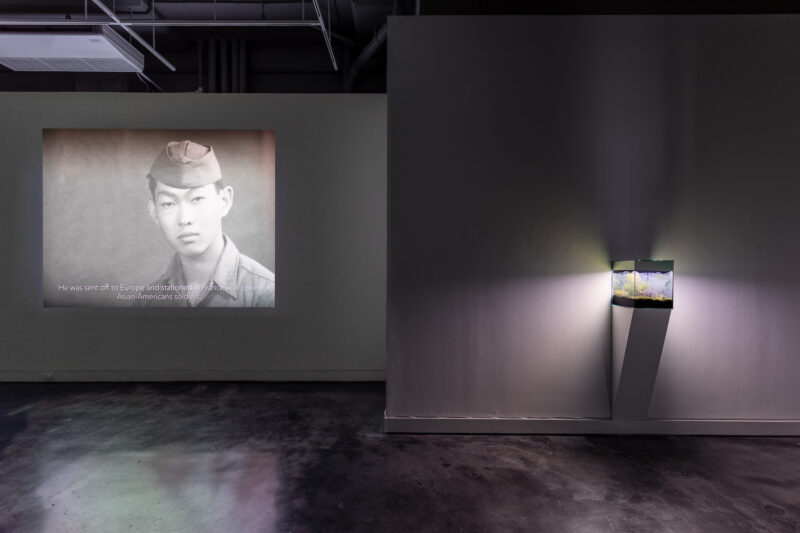
16mm film and HD video with sound,
9 minutes and 50 seconds,
edition of 5. Photo courtesy of Locks Gallery
Skipping around the chronology, the narrator describes Nadia’s childhood battle against the thieving moles who devastated the family’s strawberry patch. From that small, local conflict the narration time travels back and pivots to a global one, World War II. In a matter-of-fact recitation, accompanied by subtitles, we’re told that the Hironaka family, like so many other Japanese Americans, were victims of Franklin Delano Roosevelt’s Executive Order 9066 <https://www.archives.gov/milestone-documents/executive-order-9066> which forced their eviction from their home and the loss of their nursery business. The family was then incarcerated in two internment areas, one of which was a horse stall. We learn that not everyone survived.
As the details of the story unfold through the narration, shifting landscapes and montages of personal and historical images are superimposed, manipulated, and presented as impressions and memories. The soundtrack is filled with sounds from nature, music, and a haunting song that heightens the riveting experience. The entire piece is an elegiac reflection that also radiates resilience. The Zen Buddhist term, “gaman,” the concept of “enduring the seemingly unbearable with patience and dignity,” comes to mind. When Hironaka’s grandfather is eventually released from the Topaz camp,he decides to reestablish the nursery and pragmatically settles on growing carnations. They are labor-intensive, but quicker to cultivate than roses.
The three other pieces in the show act as a coda for the exhibition. They stand alone, but echo the other works in subject matter and execution. We see sleight-of-hand depictions of a tree fungus and a spider web hyper rendered in animated holograms. Oddest of all, is the experience of looking at a terrarium full of plants aglow under LED lights and a mirror with the double wonder of delight and suspicion: What’s real?
Nadia Hironaka and Matthew Suib, Understories, to March 18. Locks Gallery.


